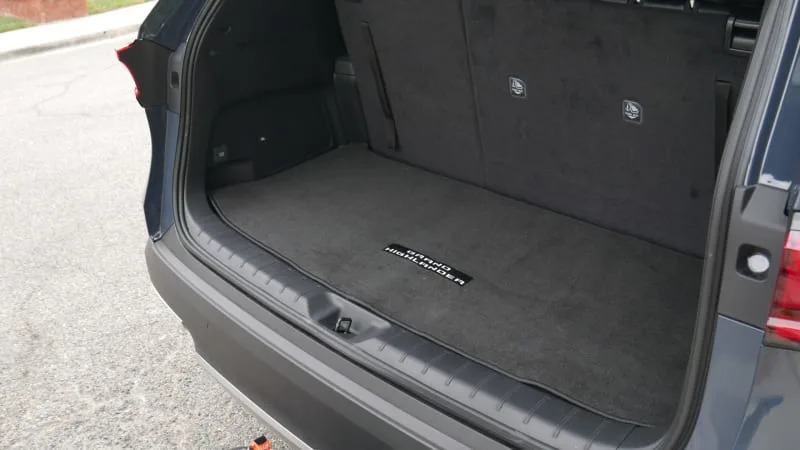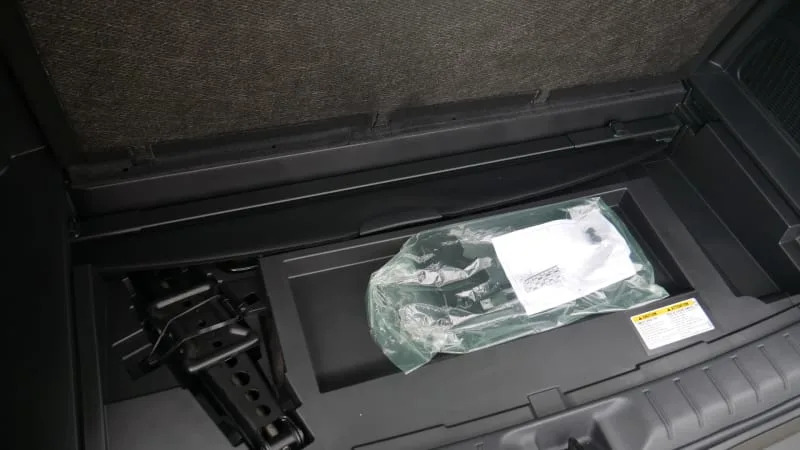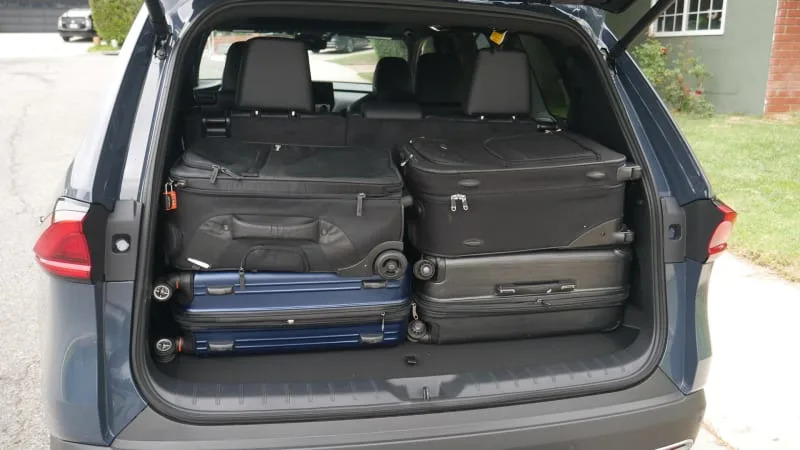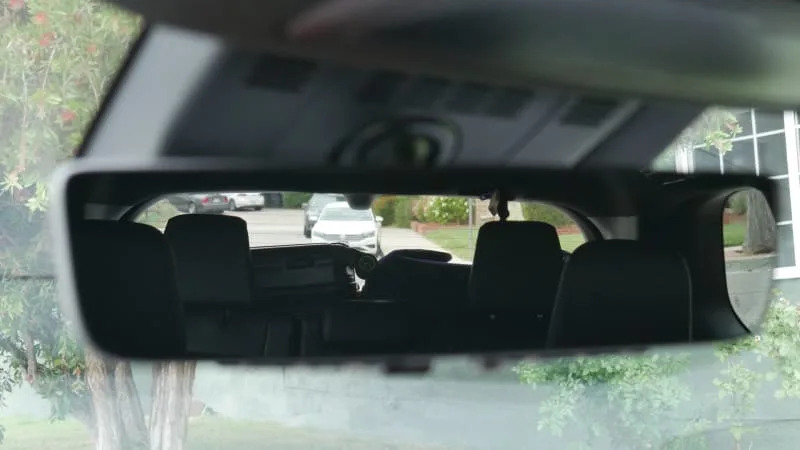The Toyota Grand Highlander is the long-awaited answer to those who’ve lamented the regular Highlander’s smaller-than-average size. Although it did get bigger with its most recent redesign, the trend still continued, and the Highlander does indeed have one of the least useful cargo areas behind its third-row seat (which is also pretty small).
While the Highlander has 16 cubic-feet of space behind its third row, the Grand Highlander lives up to its name with 20.6 cubic-feet. That would be the same as the Volkswagen Atlas, and just a whisker shy of the segment’s current Luggage Test champ, the Kia Telluride at 21 cubes even. On paper, the Buick Enclave/Chevy Traverse has the most space in the segment at 23.6 cubic-feet, and while there’s a decent chance that would hold true in a luggage test given Zac’s unofficial test out in Michigan, I have never had the opportunity to test them with my standard set of bags.
OK, so that’s the field. Let’s see if the Grand Highlander is just grander than the Highlander or grander than the entire field.

So this is what you’re working with back there. The length is clearly a bit better than average, and the D-pillar/liftgate angle is upright. Both of these tend to yield good luggage test results.

The Telluride and Pilot manage to be the current luggage test segment leaders thanks to an ample amount of usable underfloor storage. The Grand Highlander does not enjoy such a benefit. There’s enough room for the jack, the cargo cover (always appreciated) and a few odds and ends, but obviously, it doesn’t free up extra cargo area height. What you see up there in the first two pics is what you get.
On to the bags, then. As with every Luggage Test, I use two midsize roller suitcases that would need to be checked in at the airport (26 inches long, 16 wide, 11 deep), two roll-aboard suitcases that just barely fit in the overhead (24L x 15W x 10D), and one smaller roll-aboard that fits easily (23L x 15W x 10D). I also include my wife’s fancy overnight bag just to spruce things up a bit (21L x 12W x 12D).

First, I simply filled it up to the back seat line. Some notable things here …
- These are the four biggest bags.
- That would be the two biggest bags placed end-to-end on the bottom. That means the Grand Highlander’s cargo area is wider than every three-row crossover I’ve tested. I can’t be 100% sure, but it does seem that even the Tahoe and Expedition can’t do this. The Jeep Wagoneer does, however.
- There is clearly some room up high, let’s see if I can fit more.

Wow, this really surprised me. That would be all my bags behind the raised third row. The liftgate closed fine and although the fancy bag is collapsed because it’s empty, it still would’ve fit if full.
Congratulations Toyota Grand Highlander! You’re the new Three-Row Crossover SUV Luggage Test champion! You also beat the Chevy Tahoe/GMC Yukon and Ford Expedition, while coming in only second to the Jeep Wagoneer, which has a bit more space leftover. And remember, the Grand Highlander did this without extra underfloor storage. It big.
Now, it must be said that minivans and extended-length SUVs crush all of the above, but I don’t test those cause I just don’t have enough stuff to do it. (OK, unless I have all my stuff.)
“BUT WAIT!!!” you’re saying. “You nearly almost stacked to the roof! What about your rules for safety and visibility?!?”
Very good question, and I was aware of that when doing the test and making the above proclamation. First, the head restraints and seatbacks would keep the bags in place so we’re good on the safety front. As for visibility …


Above you can see the rearview with the mirror as well as with this Grand Highlander trim level’s rearview camera mirror. I hereby deem visibility sufficient with the mirror, and the camera basically makes any concern a moot point.
We have a new leader. Now if only GM would put the Traverse and Enclave in the press fleets again …
Read the full article here


